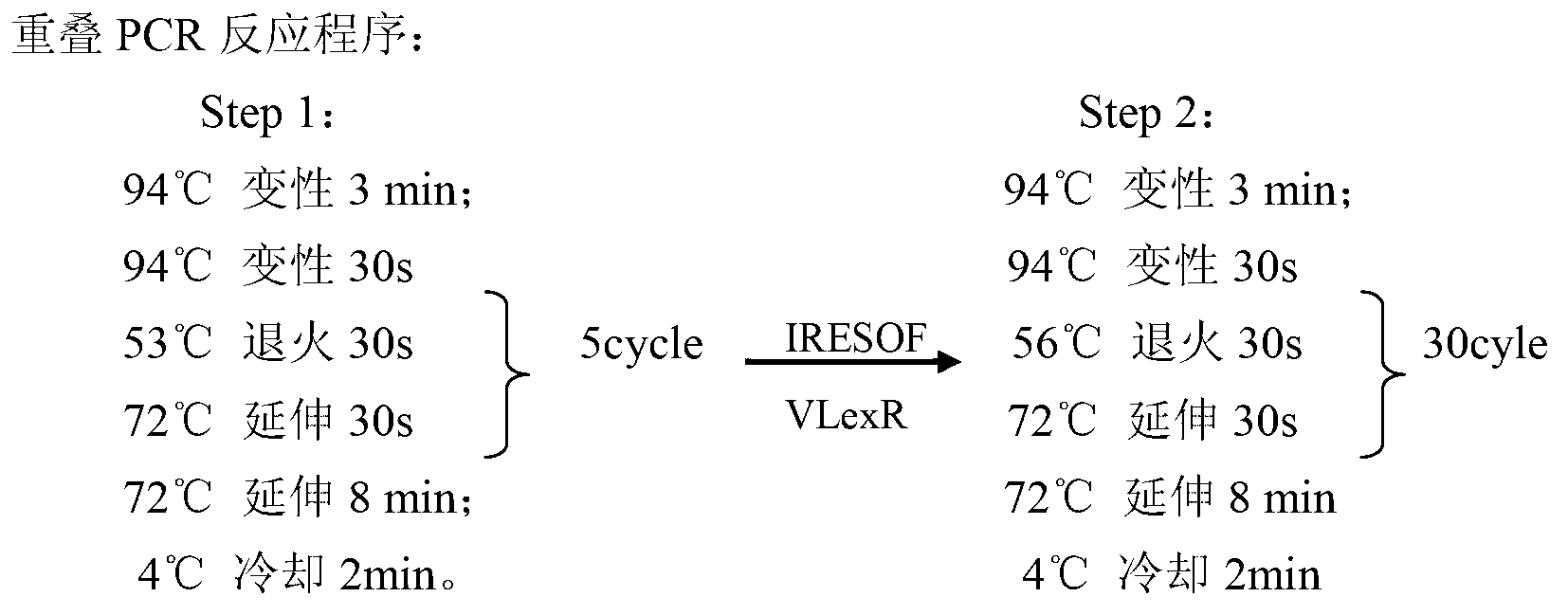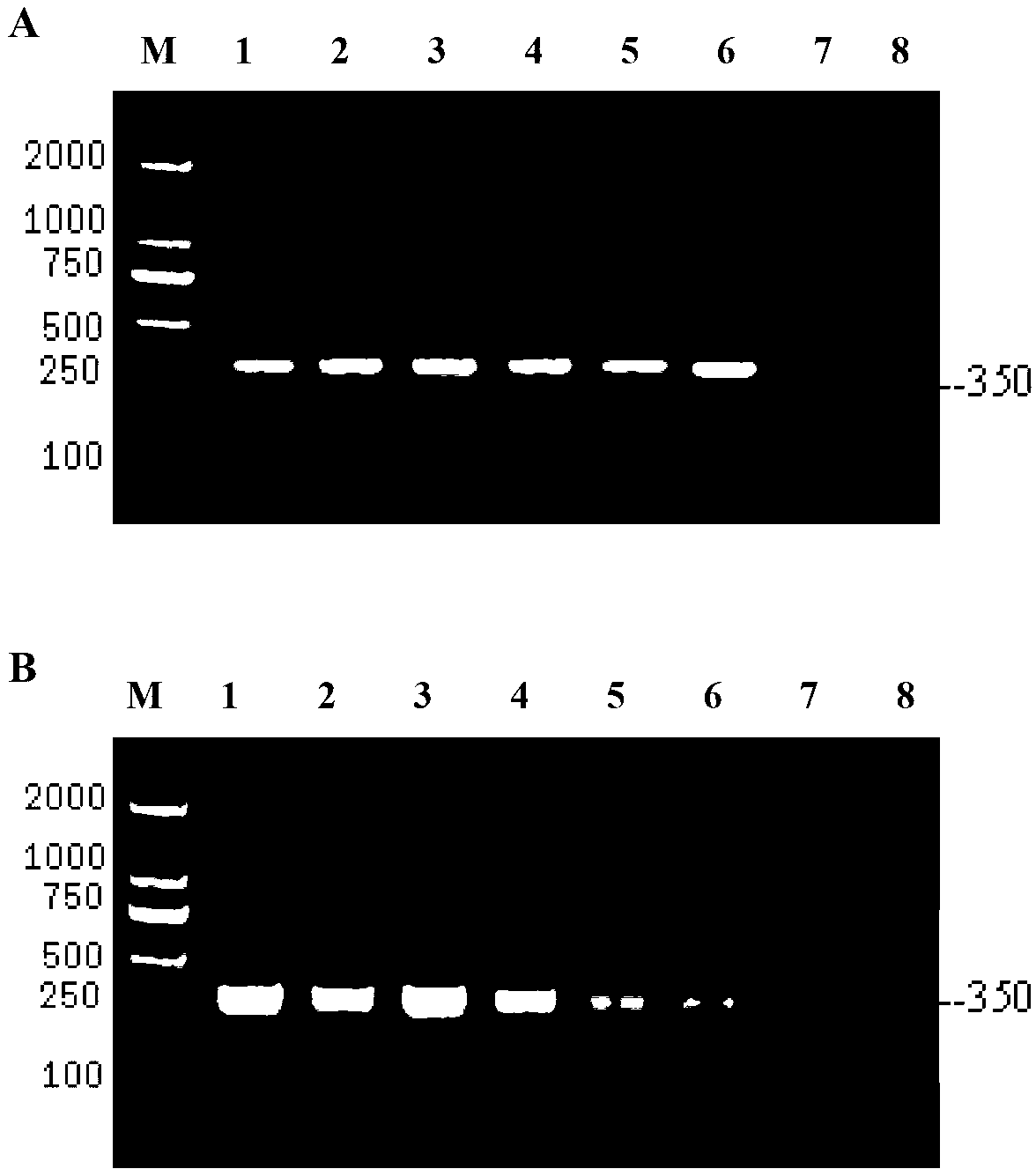Staphylococcal enterotoxin gene engineering reshaped antibody and its preparation method and use
A staphylococcal enterotoxin genetic engineering technology, which is applied in the field of staphylococcal enterotoxin genetic engineering remodeling antibody and preparation, can solve the problems of disappearance of secretion ability, stability defect, specific binding ability to be improved, etc., and achieve strong affinity and high-efficiency expression specific effect
- Summary
- Abstract
- Description
- Claims
- Application Information
AI Technical Summary
Problems solved by technology
Method used
Image
Examples
Embodiment 1
[0032] Using SEK-GST fusion protein as the immunization antigen, immunize 6-week-old Balb / c mice 4 times, 2 weeks / time: the initial immunization adopts the method of adding the same amount of Freund's complete adjuvant to subcutaneously inject multiple points on the back of the neck, and the dose of immunization antigen is 100 μg / rat; the second immunization adopts the method of adding the same amount of Freund’s incomplete adjuvant into multiple subcutaneous injections on the back of the neck, and the dose of immune antigen is 100 μg / rat; the third and final immunization does not add adjuvant, and the tail vein is used to immunize The dose of antigen was 50 μg / monkey. The Balb / c mice that had been immunized were sacrificed, the spleen was aseptically removed, and the immune spleen cell suspension was prepared for future use. In vitro fusion of immune spleen cells and myeloma SP2 / 0 cells by the PEG method, the steps are as follows: draw and mix 1×10 8 immune spleen cells and ...
Embodiment 2
[0093] (1) Cellular indirect immunofluorescence (IFA): BHK-21 cells transfected with p2C2HILO and pcDNA3.1(+) for 45 days were collected separately, and the concentration was 1×10 6 cell / mL suspension, dropped on a sterile coverslip, at 37°C, 5% CO 2 Cultivate for 24h. Discard the culture medium, wash with PBS twice, drop a few drops of methanol on the slide, and let it stand at -20°C for 10 minutes. Wash once with PBS, add a few drops of pre-cooled acetone solution, and let stand at -20°C for 1 min. Wash once with PBS, add 10 μL / mL of natural staphylococcal enterotoxin SEA and recombinant staphylococcal enterotoxin SEA-His, SEG-His, SEK-His, SEO-His, SEQ-His, SEU-His respectively, 4°C Let stand for 45min. Wash once with PBS, add 5% FCS blocking solution dropwise, and let stand at 4°C for 30min. Wash once with PBS, add dropwise 1:100 dilution of anti-SEs chicken polyclonal antibody, and let stand at 4°C for 45min. Wash once with PBS, add dropwise 1:100 dilution of mouse a...
Embodiment 3
[0097] Collect a large number of stable expression secretory cells obtained in Example 1, wash the cells twice with pre-cooled PBS, add RIPA lysate, ice-bath for 30 minutes, centrifuge at 1000r / min for 5 minutes, centrifuge to get the supernatant, and freeze for later use. The lysed supernatant was diluted 1:10 with carbonate coating solution (pH 9.6), coated at 100 μL / well, and left overnight at 4°C. After taking it out, wash it twice with PBS, 1 min each time. Block with 5% fetal bovine serum, 150 μL / well, incubate at 37°C for 30 min and wash as before. Add natural enterotoxin SEA and recombinant antigens SEA-his, SEK-his, SEG-his, SEO-his, SEQ-his, SEU-his respectively from 10 μg / mL to 2× doubling dilution, 100 μL / well, each group Repeat for 3 wells, incubate at 37°C for 30 min and wash as before. Add 1:100 diluted chicken polyclonal antibody, 100 μL / well, incubate at 37°C for 30 min and wash as before. Add enzyme-labeled secondary antibody Anti-chicken-HRP, 100 μL / well,...
PUM
 Login to View More
Login to View More Abstract
Description
Claims
Application Information
 Login to View More
Login to View More - R&D
- Intellectual Property
- Life Sciences
- Materials
- Tech Scout
- Unparalleled Data Quality
- Higher Quality Content
- 60% Fewer Hallucinations
Browse by: Latest US Patents, China's latest patents, Technical Efficacy Thesaurus, Application Domain, Technology Topic, Popular Technical Reports.
© 2025 PatSnap. All rights reserved.Legal|Privacy policy|Modern Slavery Act Transparency Statement|Sitemap|About US| Contact US: help@patsnap.com



